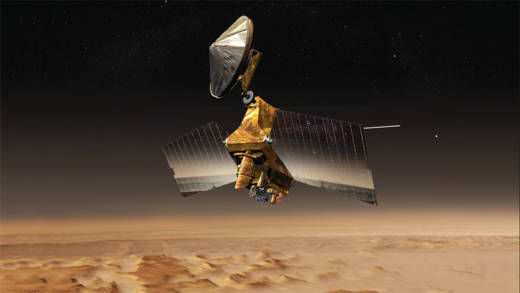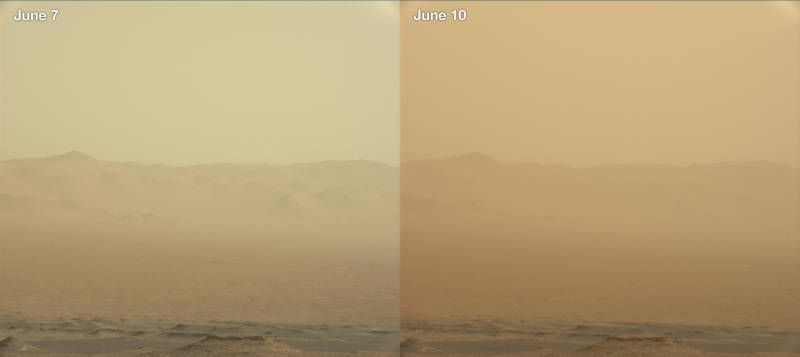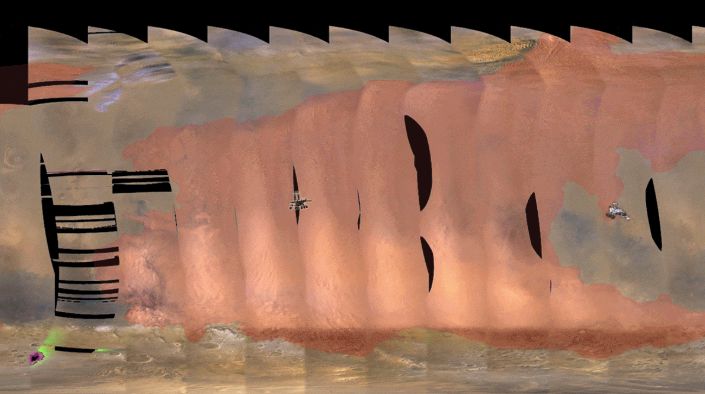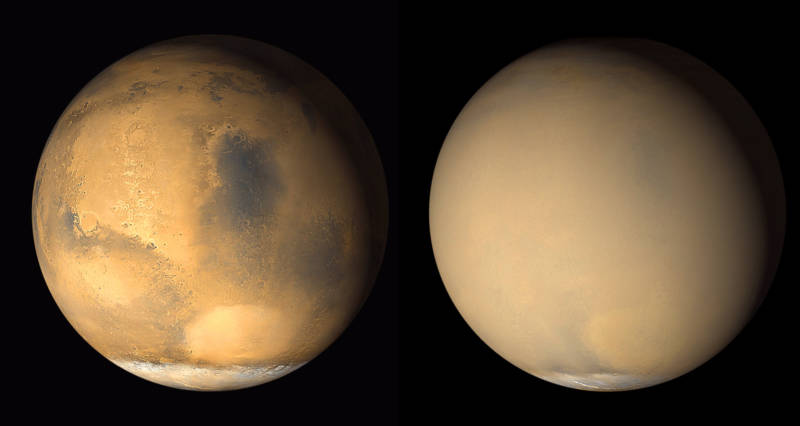There is a mighty windstorm now raging on Mars. From all indications, it’s a whopper, stronger than any since at least 2007 and now covering most of the planet.
In the opening scene of “The Martian,” Matt Damon battles against a Red Planet gale that blows over equipment and sends objects flying. So you might expect that NASA is busy commanding its rovers and spacecraft to batten down their hatches and find safe havens to ride out the storm. In fact, on June 12, NASA lost contact with the rover Opportunity, located near the heart of the raging storm, where winds may be as high as 60 miles per hour.
But the loss of contact is not because the wind has toppled the rover or smashed it to pieces with a flying rock. Real Martian wind storms are less dramatic than you might believe from Hollywood. Mars’ atmosphere is only a hundredth as thick as Earth’s, so even a full-blown Martian gale wouldn’t lift a kite.
Opportunity effectively went to sleep for a lack of sunlight. A thick veil of dust blown into the atmosphere by the storm choked off the rays of sunlight needed to charge its batteries.

Opportunity has entered a low-battery “sleep” mode to conserve whatever power is left. When the dust finally clears and full sunlight is restored, Opportunity’s batteries will recharge and, if all goes well, the rover will transmit an “I’m alive!” message to Earth, whose humans are anxiously waiting:
Hang in there, Opportunity! #OppyPhoneHome ❤ #mars #marsrover #Opportunity #NASA #JPL #goforlaunchcomics @MarsRovers @NASA @NASAJPL @tweetsoutloud @NASAJPL_Edu @govspaceagent @lorengrush @SPACEdotcom pic.twitter.com/rWNxxEJrPo
— Abby Garrett (@abbygarrettX) June 18, 2018
This week, I channeled my worry into designing and stitching this @MarsRovers Opportunity, with blue for the Martian sunrise we are waiting for.
Cc: @tanyaofmars, @PlanetaryKeri pic.twitter.com/5rx8qKSes6
— Alyshondra Meacham (@AlyshondraM) June 18, 2018
An Opportunity for Learning




